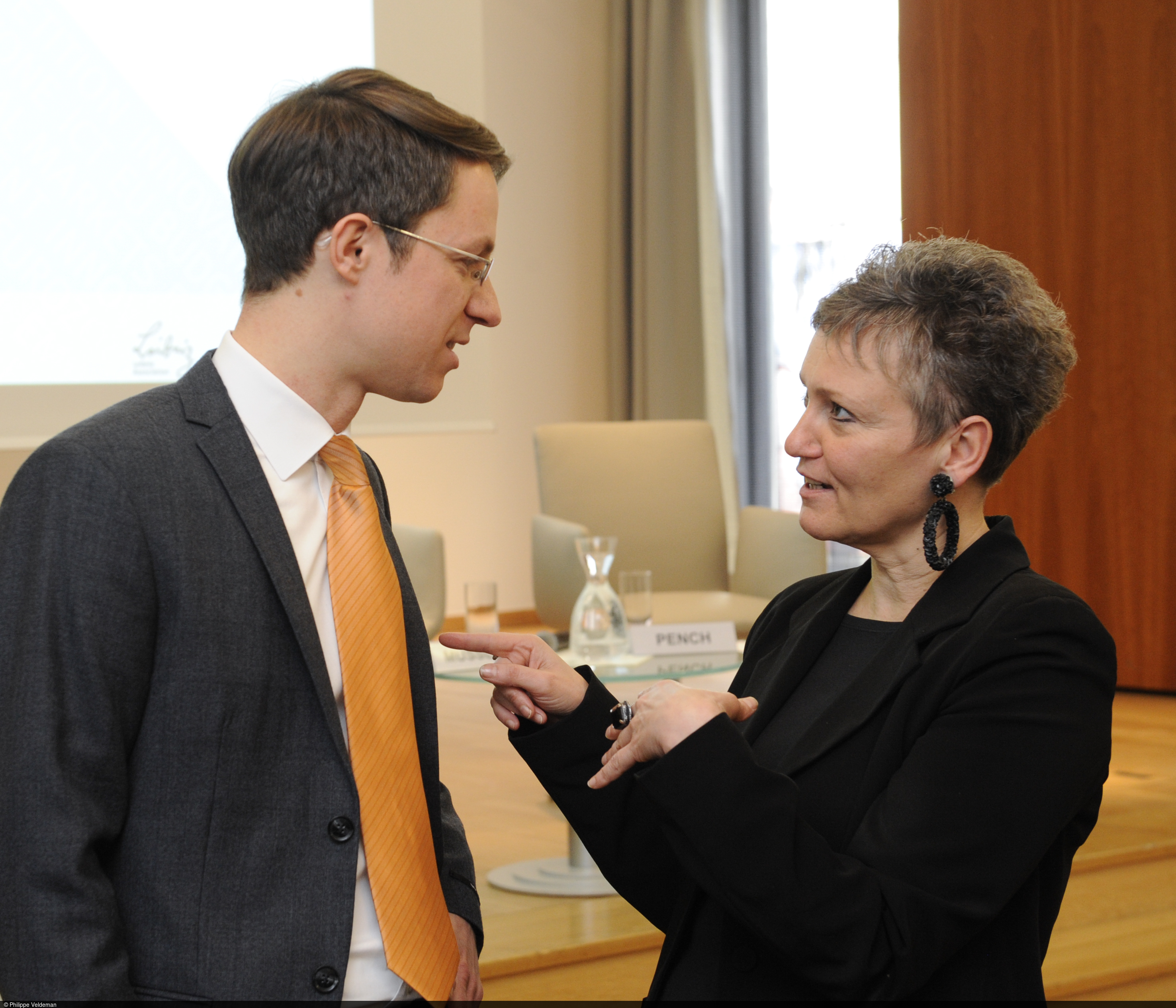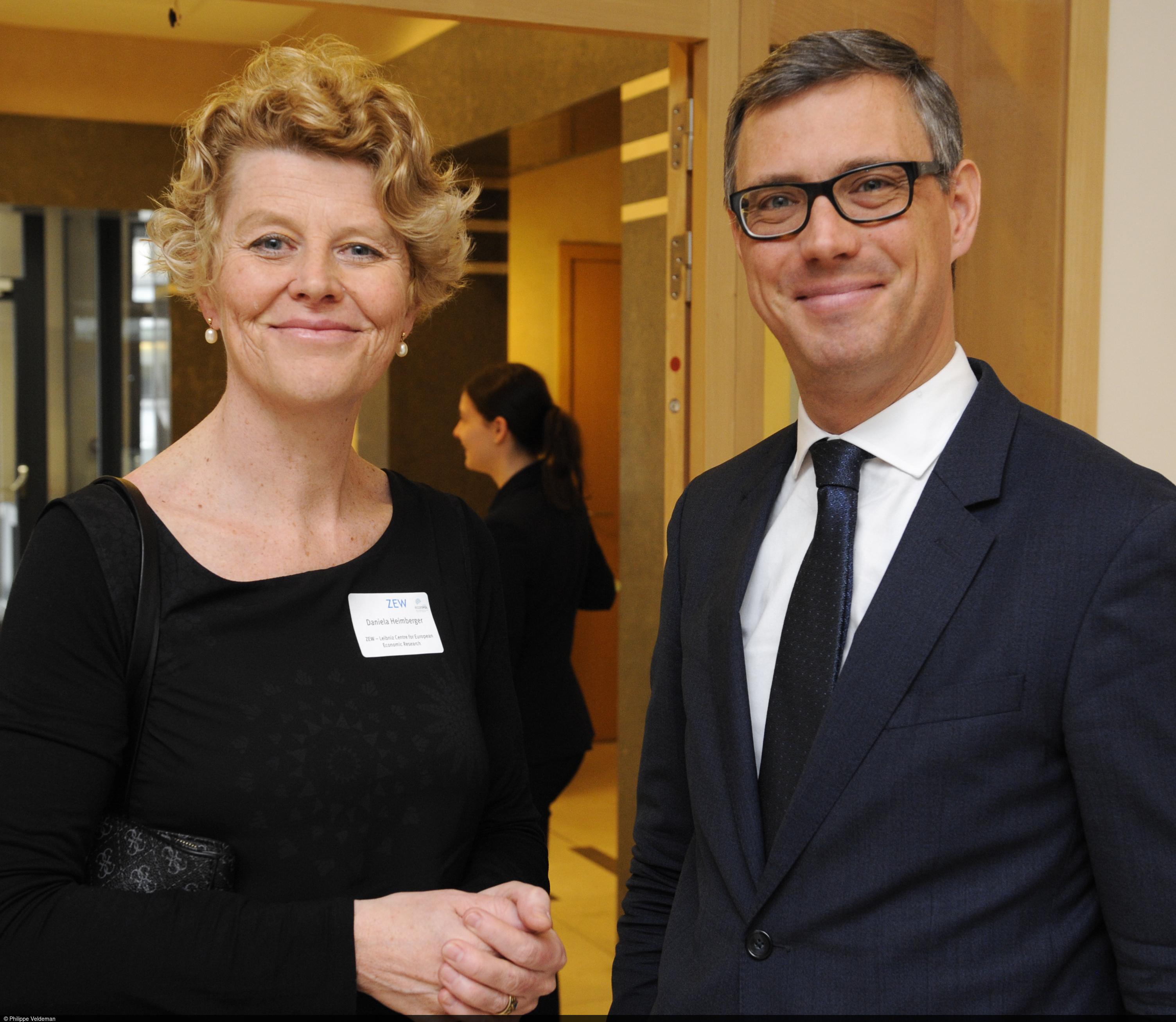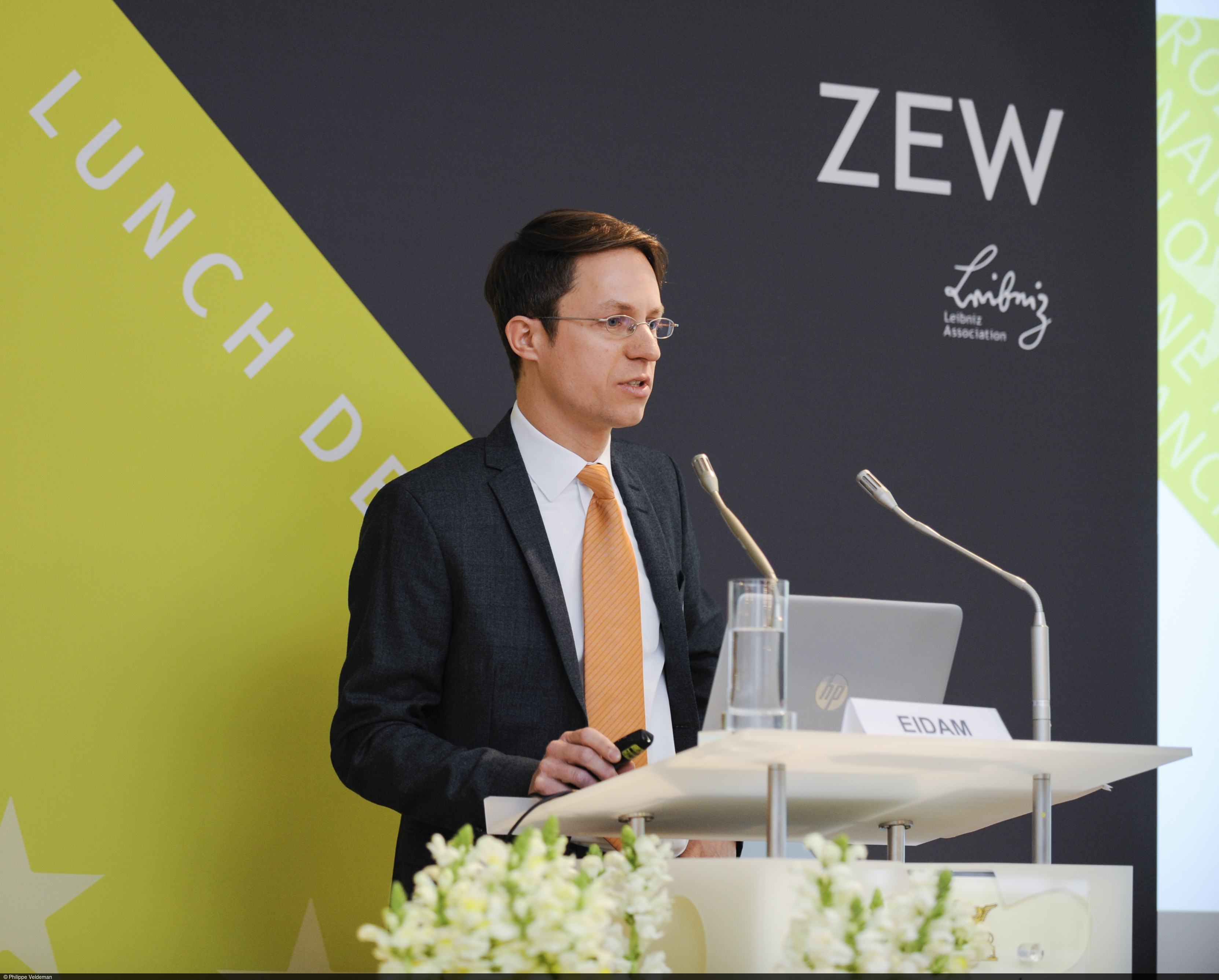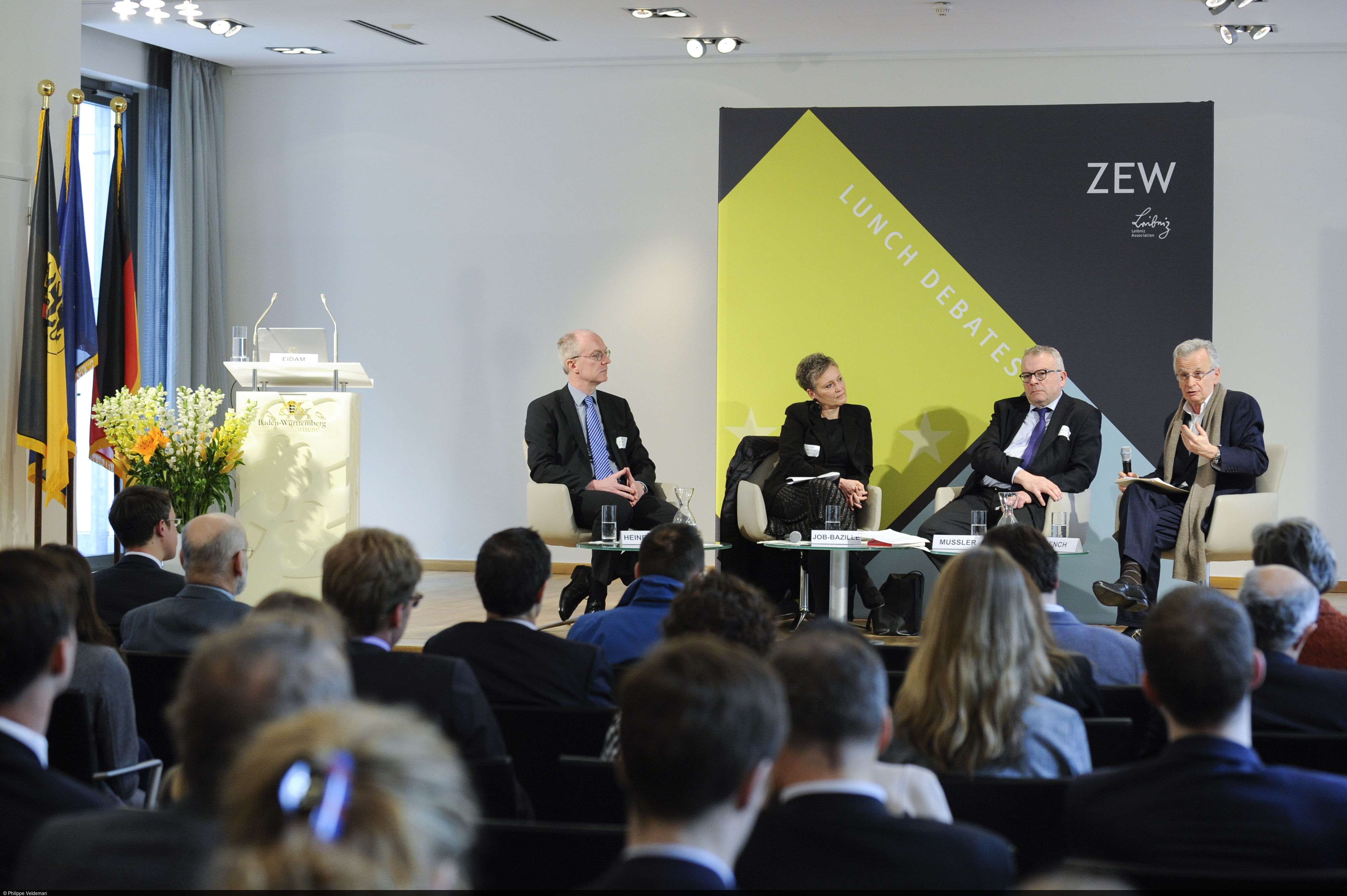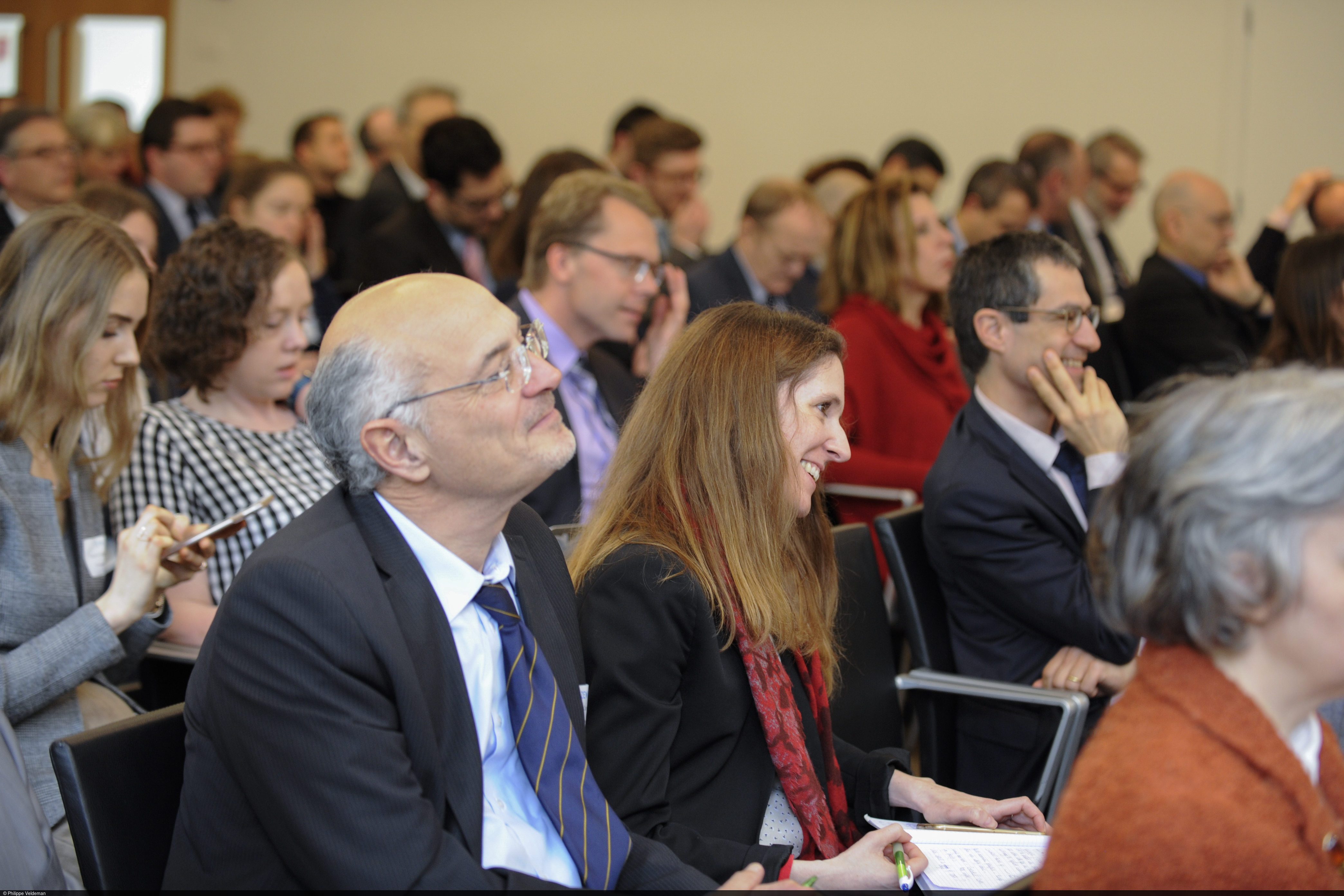In the Event of a Crisis Europe Must Be Able to Restructure Its Debt
EventsZEW Lunch Debate "Reforming the Eurozone: How to Handle Sovereign Debt?"
The European sovereign debt crisis has underlined the economic and financial vulnerability of the euro area. In the event of another crisis, public debt can quickly rise to an unsustainable level. Hence, alternatives are needed to mitigate future debt crisis. One possibility would be to introduce a sovereign debt restructuring mechanism (SDRM), a kind of international insolvency procedure. The Lunch Debate on 28 March 2019 in the Representation of the State of Baden-Württemberg to the European Union in Brussels organised by the ZEW – Leibniz Centre for European Economic Research in cooperation with the research network EconPol Europe, brought together experts who discussed this pressing issue.
After a brief welcome address by head of the Representation, Bodo Lehmann, Dr. Frederik Eidam, researcher in the ZEW Research Department “International Finance and Financial Management”, presented the results of a recent ZEW/EconPol analysis about possible design options for an SDRM. In his speech, Eidam pointed out that an ideal model does not exist. Instead, due to its many dimensions, a restructuring mechanism requires that several well-considered decisions be taken. Therefore, the ZEW/EconPol analysis addresses the basic problems, trade-offs as well as pros and cons of different design choices.
Focussing on five key dimensions – institutional assignment of responsibilities, activation of the procedure, design and extent of debt restructuring, role and details of collective action clauses (CACs), safeguards for financial stability –, Eidam made it clear that a debt restructuring mechanism can help to mitigate or even resolve future sovereign debt crises. He stressed the importance of assessing the underlying trade-offs that come with individual design decisions, which differ according to national interests and political and economic costs. According to the study, institutional responsibilities such as the provision of liquidity and the analysis of debt sustainability, for example, must clearly lie with a neutral institution. However, such an allocation also depends on the euro countries’ respective position towards transfers. Here, a distinction between insolvency and illiquidity of individual euro states is necessary but difficult.
An SDMR additionally provides supplements between design options and thus creates more political flexibility, Eidam continued. Design decisions made in one dimension could lead to a limitation or easing in one of the other dimensions. Overall, however, there is no convincing reason to postpone the quest for a sovereign debt restructuring process in the eurozone any further.
Disagreement on the podium
The presentation was followed by a podium discussion between Professor Friedrich Heinemann, head of the ZEW Research Department “Corporate Taxation and Public Finance”, Isabelle Job-Bazille, Chief Economist of French commercial bank Crédit Agricole S.A. Group, and Lucio Pench, Director for Fiscal Policy and the Policy Mix of the Directorate-General for Economic and Financial Affairs at the European Commission. The debate was moderated by Dr. Werner Mussler, economic correspondent of the Frankfurter Allgemeine Zeitung in Brussels, in front of around 100 guests and held in the Representation of the State of Baden-Württemberg.
The panellists did not agree on topics concerning the introduction, design and impact of an SDRM for public debt. Lucio Pench raised concerns as to whether such a procedure was necessary at all. He called into question whether there will be clear cases of final insolvency at all in the future and whether a better defined mechanism for debt restructuring would be needed for this purpose. From his point of view, an SDMR involves too many financial and macroeconomic risks. He argued that it would be extremely difficult to differentiate between insolvency and a temporary liquidity crisis. To accelerate such a procedure would thus not be useful at the moment.
Friedrich Heinemann countered that there had been clear cases of insolvency in the past, such as Greece, and that there were likely to be more in the future. In his view, even today the granting of “liquidity aid” to an insolvent country is nothing short of a transfer. We are thus heading for a gigantic transfer union, which, however, still needs an institutional and regulatory framework. Previous transfers are raising serious problems of democratic legitimacy, said Heinemann.
Isabelle Job-Bazille also generally agreed on the added value of SDRM, but strongly doubted whether this would be feasible at present. Her main concern was that the financial stability of the euro area was not sufficiently safeguarded. She argued that a restructuring mechanism would destabilise too many eurozone countries the closer one gets to the trigger point of the procedure. According to Job-Bazille, the individual design options bear too much unpredictability which could ultimately lead to greater fragility in the eurozone.


